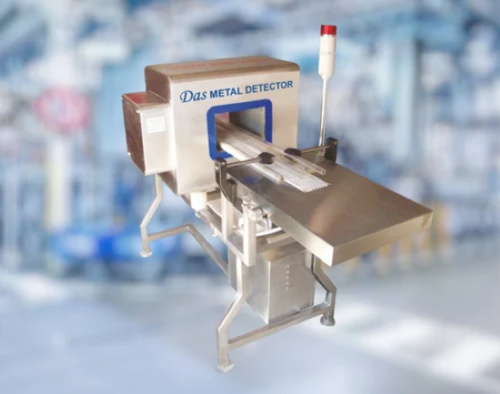
Pulse Metal Detector
Product Details:
- Usage For inspecting suspicious things.
- Click to View more
Pulse Metal Detector Price and Quantity
- 1 Unit
- 300000.00 - 500000.00 INR/Unit
Pulse Metal Detector Specification
- For inspecting suspicious things.
Pulse Metal Detector Trade Information
- mumbai
- 30 Unit Per Month
- Week
- Contact us for information regarding our sample policy
- As per requirement
- Chandigarh Meghalaya Nagaland Dadra and Nagar Haveli Lakshadweep Uttar Pradesh Chhattisgarh Bihar Madhya Pradesh Andaman and Nicobar Islands Gujarat Odisha Rajasthan West India Assam Jharkhand Mizoram Maharashtra Kerala Delhi North India Arunachal Pradesh Goa Karnataka Punjab South India Pondicherry Sikkim Uttarakhand Tripura Tamil Nadu Manipur Himachal Pradesh East India Jammu and Kashmir Telangana West Bengal Daman and Diu Haryana Andhra Pradesh Central India All India
- ISO
Product Description
The pulse induction metal detector is the high-grade metal sensor for discovering gold in fields of Gold as it does not react to the iron calcification normally discovered in the region of gold such as magnetite. This firmly apparent in magnetite hot rock situations that will induce VLF to over-burden however not affect on a PI. A piece of gold alongside a magnetite hot rock will be omitted by a VLF identifier however the affirmative gold reaction will be selected by our pulse induction metal detector. It has expanded profundity over VLF because of the expanded energy that can be produced to the curl, which makes a more grounded signal. Our range is intended particularly for the conditions discovered in the goldfields.
- Helpful to Food industry
- Spices Manufacturer
- Pickle Industry
- Grossary manufacturer
Pulse Metal Detector Mechanism:
- The Pulse Induction Metal Detector creates a short high voltage pulse into the surface by means of the loop channel cabling. At the point when the current is circulating it makes a magnetic area that grows outwards from the loop.
- At the point when this magnetic area experiences a metallic thins it alterations the voltage circulation.
- When voltage pulse is switched off the voltage circulation produced by the thing produces back to the curl making the objective sound.
- The subsequent signal (target sound) restituted by means of the receive loop is intensified, examined and investigated.
- This cycle is rehashed on a progressing ground hundreds to a large number of times each second.
Benefits of Pulse Metal Detector:
- Mineralized Land: Manages mineralized land superior to a VLF as well as intensely mineralized land will over-burden the circuits.
- Profundity: Generally more profundity especially in mineralized regions
- Hot Rocks: Manages hot rocks as well as mineralization superior to VLF
- Small Lump Detection: In boisterous mineralized zones the PI has leverage over the VLF
- Monoloops Utilized on PI metal discoverers: Monoloops are just utilized on PI identifiers and they may be more touchy to small nuggets of gold
- PI Metal Identifier Intended to Discover Gold: When all is said in done terms the PI Metal Identifiers have been particularly intended to discover local gold pieces.
Applications of Pulse Metal Detector:
- Coal Handling Plants
- Cement Plants
- Mining(Coal, Ores, Stones)
- Thermal power plants
- Paper Mills
- Glass Industries
FAQs of Pulse Metal Detector:
Q1: How does a pulse metal detector function?
A1: Pulse metal detectors work on the standard of pulse acceptance. They create short explodes or pulses of electromagnetic energy and produce them into the ground or a particular region. At the point when these pulses experience a metal item, they prompt vortex flows in the metal, which, thusly, produce an optional attractive field. The detector's beneficiary loop recognizes the rot of this auxiliary attractive field, creating a sound or visual sign to make the administrator aware of the presence of metal.
Q2: What sorts of metal articles can pulse metal detectors distinguish?
A2: Pulse metal detectors are equipped for identifying a large number of metal items, including ferrous metals (iron and steel), non-ferrous metals (copper, aluminum, and so on), and valuable metals (gold, silver, and so on.). They are compelling at finding both little and enormous metal things, contingent upon their awareness settings and the detector's plan.
Q3: Are pulse metal detectors impacted by mineralization in the ground?
A3: Pulse metal detectors can be impacted by mineralization in the ground, for example, high mineral substance or conductivity, which can make misleading signs or decrease recognition profundity. Administrators might have to change the detector's settings or utilize specific curls to moderate the impacts of mineralization.
Q4: Are pulse metal detectors appropriate for submerged use?
A4: Some pulse metal detectors are intended for submerged use and can be utilized for recognizing metal items in sea-going conditions, like waterways, lakes, or seas. These submerged models are ordinarily waterproof and worked to endure submersion while keeping up with their presentation.
Q5: Can pulse metal detectors separate between sorts of metal articles?
A5: Most pulse metal detectors are not intrinsically fit for recognizing various kinds of metal articles. They by and large give a ready when metal is distinguished yet don't recognize the particular metal sort. Nonetheless, a few high level models and multi-recurrence detectors offer superior segregation capacities.
 |
DAS ELECTRONICS
All Rights Reserved.(Terms of Use) Developed and Managed by Infocom Network Private Limited. |
 English
English Spanish
Spanish French
French German
German Italian
Italian Chinese (Simplified)
Chinese (Simplified) Japanese
Japanese Korean
Korean Arabic
Arabic Portuguese
Portuguese
